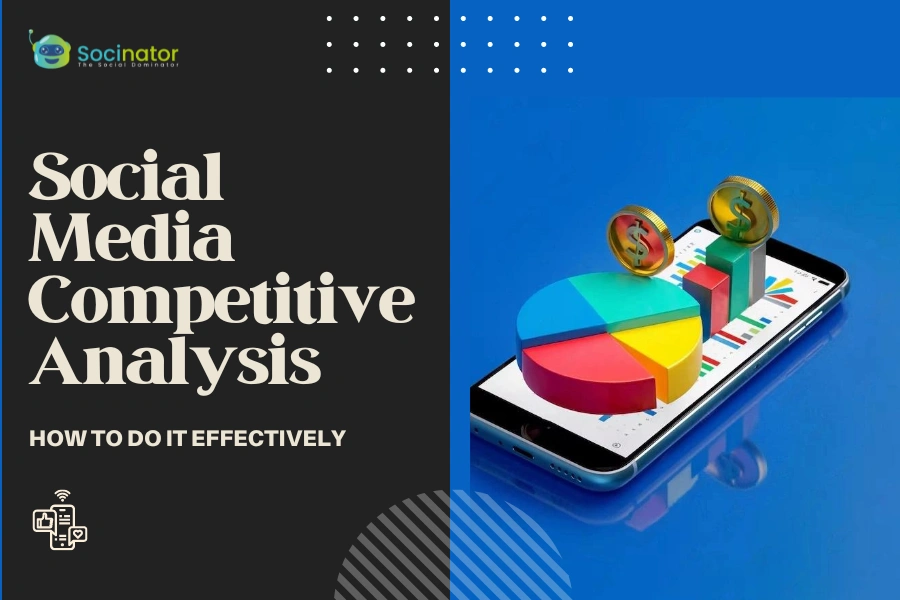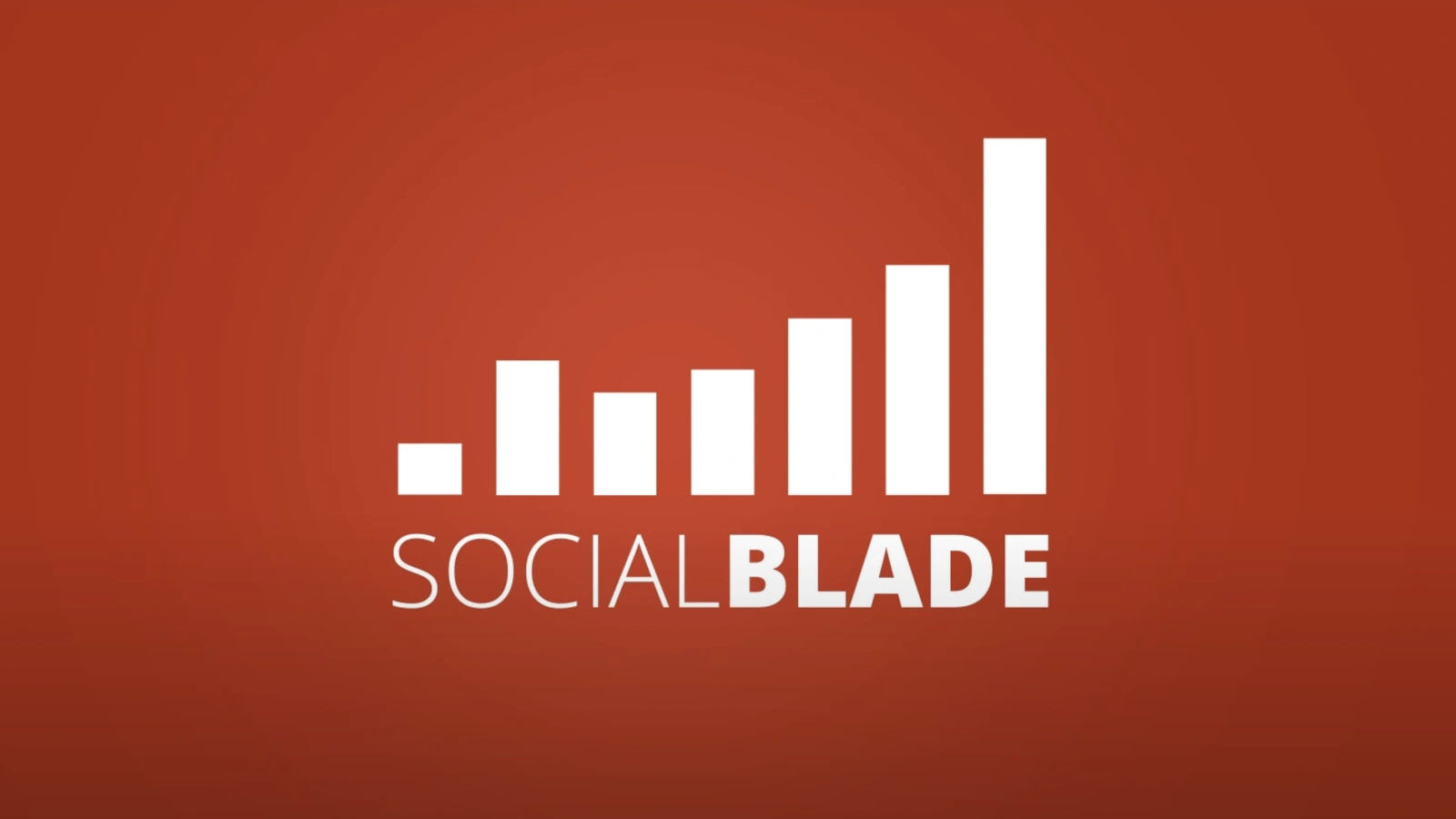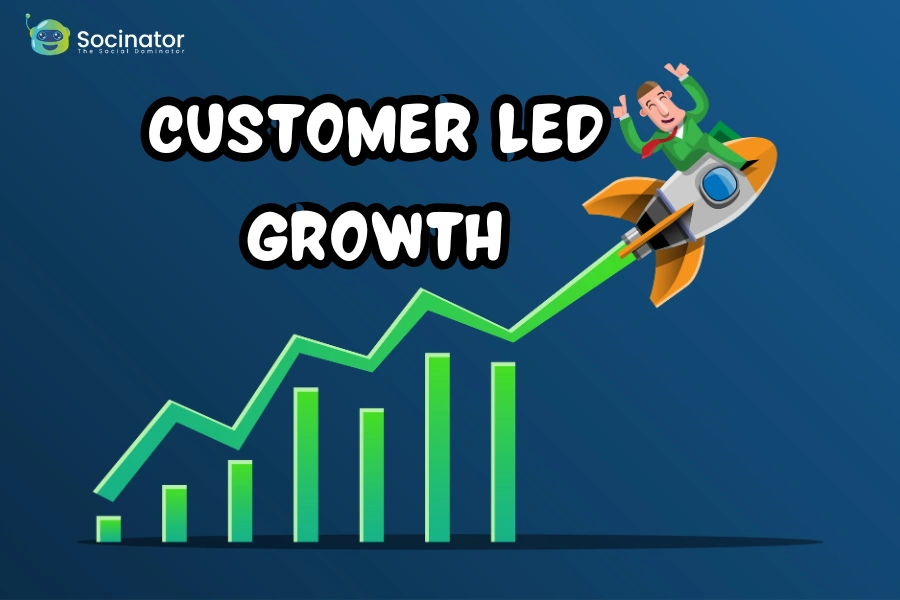Social media has become vital for companies looking to build a powerful online presence and connect with their target market. However, it is essential to understand what your rivals are doing to succeed on social media if you want to keep one step ahead of them.
By performing social media competitive analysis, you can gain crucial knowledge about their advantages and disadvantages and use that knowledge to create a social media plan that works better for you.
In this blog, we will go over the process of performing a thorough social media competitor analysis, from identifying your rivals to examining their social media activity. This blog will provide the information and resources you need to stay ahead of the competition, regardless of whether you’ve just started or want to update your current social media strategy. So, let’s begin.
Hit ‘Play’ Button & Tune Into The Blog!
What is Social Media Competitive Analysis?
Social media competitive analysis is evaluating your competitors social media advertising strategies to identify market niches and develop brand expansion plans. With the help of this analysis, you can create a successful social marketing plan by determining the advantages and disadvantages of your rivals. Along with providing relevant details about your target market, it also explains why consumers are drawn to rival brands and highlights how these businesses excel at social media marketing.
A competitors social media analysis could look like this:
- An evaluation of your rivals’ social media presence
- Analysing content they exchange on every platform
- An analysis of the times and frequency of their posts
- A rundown of the most well-liked posts from your rivals
- An evaluation of their content’s quality
- A list of their fans and metrics for interaction
To streamline this process, consider using Socinator, a robust social media automation tool. Socinator simplifies social media management by helping you monitor competitor activities, schedule content, and gain deeper market insights, giving you an edge in your strategy.
Importance of Social Media Competitive Analysis
Any company hoping to thrive in this fiercely competitive market has to know how to do a competitive analysis social media and analyze its social media competitors. You must regularly analyze your competitors on social media for several reasons:
Gain a Deeper Understanding of Your Potential Clientele
By conducting a social media competitive analysis, you can learn more about the kind of customers you should target. Understanding your target audience’s characteristics enables you to achieve huge marketing outcomes since you can:
- Which social networking sites do your ideal customers frequent
- How they take in information
- The kinds of content that they are looking for
- What problems do they need to have fixed
- When do they post on social media?
Build a Better Social Strategy
You may develop a successful social media plan or refine an existing one if you comprehend how and why your competitors are outperforming your brand.
Since a competitive analysis social media study contrasts your strategies and outcomes with those of the competition, it pushes you to perform at your highest level. You can also recognize risks that require addressing and opportunities to take advantage of for brand expansion.
Create Relevant Content
It makes sense that the brands your ideal customers choose are those whose content and values they share. You’ll become the first person your ideal clients think of when you do a social media competitor analysis.
It is so that you can determine the kinds and formats of material that your competitors are interested in seeing. Additionally, you can use the content gaps you find to your advantage by producing new and insightful content for your audience.
Better Marketing and Positioning
You can use your social media channels for more efficient marketing by performing a social media competitive analysis. Upon seeing the tactics employed by your competitors, you will begin utilizing pertinent yet little-used social media capabilities and tactics.
Furthermore, this allows you to develop a positioning strategy, setting your brand apart from the competition and establishing you as an authority in your field.
5 Much Needed Social Media Analysis Tools
Ensure you use better tools than your rivals if you want to stay ahead of the pack. You will learn about five of the top social media competition analysis tools available on the market currently.
Google Analytics
Because of its capabilities for web analytics, Google Analytics is familiar to you. However, did you realize you can also apply to competitor analysis social media?
The capability of Google Analytics to monitor the websites of your competitors is one of its most well-liked features. This function allows you to see how many people visit their website daily from social media. The best thing is that using it is free.
Social Blade
The social media analytics tool called Social Blade gives you information on how well your content performs on various platforms. It enables you to monitor and contrast the views, subscribers, and income generated by your videos over time. Additionally, the application provides insights into engagement metrics such as likes, shares, comments, and more, along with audience demographics.
Not Just Analytics
Not Just Analytics (previously known as Ninjalistics) is an analytics tool for Instagram. You can track rival profiles’ growth, hashtag usage, and interaction rates using this social media competition software.
Entering and analyzing the profiles of your rivals in Not Just Analytics is all that is required. For instance, the following is what Not Just Analytics shows after examining Isis Brenna’s Instagram page, a marketing strategist for business educators:
KeyHole
Keyhole is a social media analytics tool that lets you monitor and evaluate the effectiveness of your brand on various networks and platforms. It provides information on influencers, trends, demographics, and other topics.
It monitors social media mentions and data in real-time for influencer campaigns, hashtags, and keywords for you and your competitors. By using innovative data visualizations like hashtag maps, Keyhole makes it easier to comprehend the discourse surrounding a specific subject or occasion.
How To Do Social Media Competitive Analysis for Maximum Impact?
Competitor analysis social media doesn’t have to be vigorous. These are the five stages to study about competitors, regardless of whether you utilize Facebook, LinkedIn, Pinterest, Instagram, YouTube, or any other social media platform.
Figure Your Brand Goals and Metrics
Before analyzing and contrasting the performances of competitors, decide what you desire. It’s critical to start any project with the end—your brand goals—in mind.
Find the answers to the following queries:
- What objectives do you have for your social media marketing?
- How do these align with your overarching brand objectives?
- Which KPIs (key performance indicators) will you monitor to gauge your success?
- Who do you want to be your ideal client?
Identify Your Brand Competitors
Without knowing who your competitors are or what social media platforms they utilize, it is hard to do a social media competitive analysis of them.
Pay attention to companies that offer comparable goods or services or that find solutions to the same issues as you; these are your direct and indirect competitors. Add your top five rivals to the list after that.
You can find your competitors by
Searching on Target Social Platform
If you want to increase the visibility of your business on a social media platform for a specific product or keyword, type the term into the search bar and go through the accounts or hashtags that come up to see if there are any competitors you should investigate.
Using Google Search
Although it can be a laborious procedure, you can use the search engine result page (SERP) to locate competitors ranking for your keywords on social media.
When you search, enter your desired term and note the websites—especially social media profiles—that come up.
Collect and Analyse Data
Most of this procedure consists of data collecting and processing. To simplify things, you can research, evaluate, and compare the performance of your rivals using the handy social media competitive analysis tools.
Even if your brand may have key performance indicators, you should monitor the following social media metrics as part of your competitive analysis:
- Number of Followers
- Engagement Rates
- Social Media Ad Insights
- Account Reach/Impression
- Voice-sharing
- The page’s estimated organic traffic
Create a Social Media Strategy
Data research is crucial for the competitive analysis social media, but data interpretation is even more critical. If your spreadsheet is just lines and figures, and you have no idea how to apply the data you have gathered for business intelligence, then it is nothing more than that.
It is often said that when your competitors have impressive metrics, it is essential to understand what they are doing well to build a better social media strategy. Additionally, their shortcomings— the things they don’t do well—may present chances for your brand to expand.
Create a data-driven plan that enables you to assess what is and is not working and how to leverage these insights to meet your business objectives.
For your social media strategy, make a four-part SWOT analysis table using the data from this spreadsheet. Social media SWOT analysis is a well-considered summary of your brand’s advantages, disadvantages, opportunities, and threats. It can assist you in making wise business decisions.
Keep Tabs On Account Progress
It does not end there once you have completed your social media competitive analysis. It is essential to monitor both your profile and the competition. Social media competitive analysis enables you to:
- Track the development of your brand.
- Recognize new competitors right away
- Check the effectiveness of your social media campaign.
- Find fresh chances for expansion
- Maintain a current marketing plan.
It is essential to keep up with social media and industry trends. Whether you monitor your social media competitor monthly, quarterly, mid-yearly, or on an annual basis, stick to a schedule. Ensure you update your competitor research spreadsheet to spot new dangers or possibilities.
You can also use various social media automation tools like Socinator to keep up with the social media competition. These automation tools allow you to schedule & monitor your social media posts and improve your social media strategy. Let’s explore some more features of this mindblowing social media automation software.
Socinator – The Best Social Media Automation Tool
Socinatoris an all-in-one social media automation solution using which you can manage all your marketing campaigns in a single dashboard. This tool provides an easy-to-use interface for streamlining the workflow of businesses.
From post-scheduling to social listing and providing analytics insights, Socinator offers a wide range of features that allow marketers to create and manage automated campaigns more efficiently.
For graphic design trends, Socinator offers a variety of features.
Auto-Publish and Repost
Socinator eliminates the need for manual posting. You can schedule your post and ensure that the content is posted at the desired time automatically. After posting, you can also repost the best-performing videos to increase your visibility on social media platforms.
Record Activity Frequency and Get Reports
You can track the automation activities performed through your linked social media accounts and monitor their frequencies. Also, you can get detailed insights into profile engagement, post-performance metrics, and lead targeting.
Automatic Follow, Unfollow, Like, & Comments
This social media automation tool allows you to engage with your audience through automated likes and comments. It prevents manual, time-consuming writing and posting work. You can also auto-follow and unfollow relevant users through Socinator without taking extra time from your busy schedule.
Extract Targeted Users
You can find & extract the targeted audience accounts, along with those already engaged with you. It helps to build a more engaging and long-lasting community, allowing you to master your personal branding strategy.
Also Read:
How To Stand Out In Crowd: Personal Branding Social Media?
Influence Of Social Media Analysis In Your Marketing Strategy
Why Social Media SWOT Analysis Is Important: A Blueprint For Success
How To Find Your Competitors On Instagram And Outsmart Them
Final Thoughts
Social media competitive analysis is crucial for brand growth, enabling you to establish a strong social presence, build customer trust, and enhance brand credibility.
By mastering the steps outlined above, you can effectively analyze and optimize any of your social media profiles. Identify your brand goals and convert the gathered, organized metrics into insightful, context-rich data to refine your social media strategy.
Additionally, leveraging tools like Socinator, the best social media automation tool, can streamline this process, saving time and improving efficiency. Employing these techniques will help you stay competitive and elevate your brand’s social media performance.
Frequently Asked Questions
How do I identify my competitors for analysis?
Start by using industry data, social media searches, and customer reviews to find direct and indirect competitors. While indirect competitors use different approaches to target the same audience, direct competitors provide comparable goods and services.
How often should I conduct a social media competitive analysis?
Review frequently (For example, quarterly) to ensure your insights remain current. By keeping an eye on ongoing developments in rivals’ tactics, follower growth, and engagement metrics, you can ensure your strategy stays current.
What is a SWOT analysis in the context of social media competitive analysis?
Finding the SWOT of your competitor involves assessing their advantages, disadvantages, opportunities, and threats. It helps in the integration of research results into helpful insights for improving your social media strategy.
What are some common mistakes to avoid in social media competitive analysis?
Overemphasizing competition, utilizing erroneous data, disregarding qualitative insights, neglecting to update the analysis regularly, and failing to translate insights into workable strategies are examples of common blunders.
How do I measure the ROI of my social media competitive analysis efforts?
Monitor KPIs like better customer interactions, higher engagement rates, growing follower counts, and better content performance. To determine the impact of modifications based on your competitive analysis, measure these KPIs before and after they are implemented.












